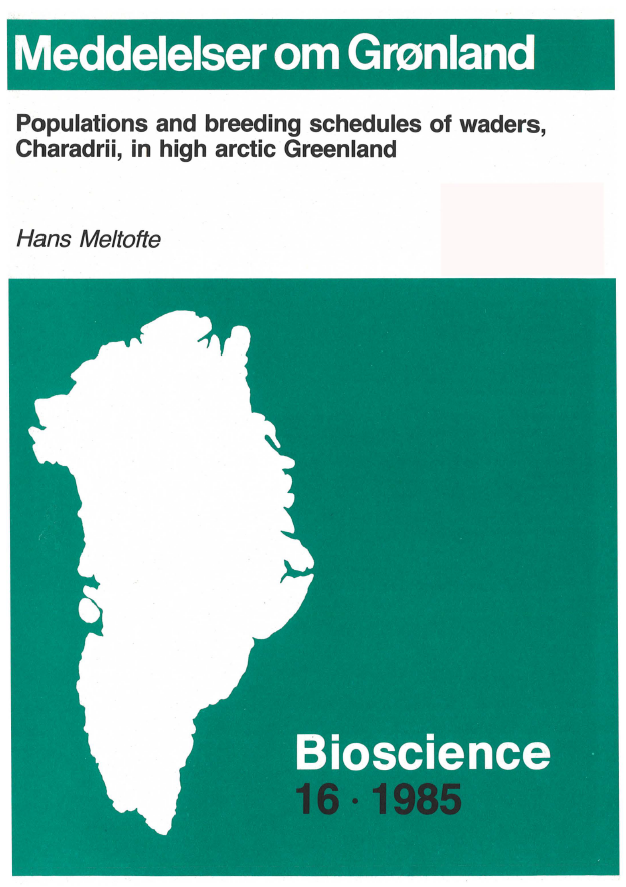Populations and breeding schedules of waders, Charadrii, in high arctic Greenland
DOI:
https://doi.org/10.7146/mogbiosci.v16.142334Abstract
Waders are the dominant birds of the high arctic tundra of Greenland, both in terms of population densities and number of species. Of 11 species of waders breeding regularly in Greenland, nine have their main distribution within the high arctic part. Charddrius hiaticula, Arenaria interpres, Calidris canutus, Calidris alpina, Calidris alba and Phalaropus fulicarius are the most abundant. Living conditions in high arctic Greenland are characterized by extremely low and often sparse vegetation, moderate snow-cover and short cool summers. Large regional, local and annual differences occur, however, and the breeding phenology and population densities of waders are described and analysed in relation to these differences. The annual schedules of the wader populations are reviewed, and the governing factors discussed for each stage, as well as the factors involved in controlling population densities, sizes and changes, and distribution on a larger scale.
A very strong negative correlation was found between start of laying and snow cover in early June, while breeding densities were best correlated with snow-free vegetation cover at this time. The most important ultimate factors involved are probably feeding conditions early in the season and, in snow-rich areas, also increasing predation risk with increasing snow-cover. Compared to other arctic areas, the waders in high arctic Greenland show moderate or low population densities, but they breed earlier than most other arctic populations. Low productivity, as compared to the extremely productive low arctic tundras of North America and Siberia, is responsible for the lower densities, while the limited spring snow-cover makes it possible for the waders to breed earlier in high arctic Greenland.
Finally an attempt is made to estimate the total population sizes of the waders breeding in high arctic Greenland, using both breeding density estimates and estimates of the same populations during winter in the Old World.

Downloads
Published
Issue
Section
License
Coypyright by the authors and the Commision for Scientific Research in Greenland / Danish Polar Center/Museum Tusculanum Press as indicated in the individual volumes. No parts of the publications may be reproduced in any form without the written permission by the copyright owners.

